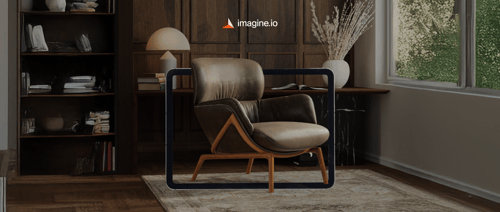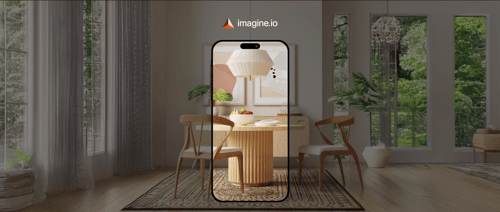Sustainability isn’t a “nice to have” anymore—it’s a non-negotiable. In today’s B2B landscape, forward-thinking brands know that aligning with eco-conscious practices isn’t just about doing the right thing; it’s about staying relevant, meeting regulatory demands, and driving smarter business growth.
One of the most powerful (and often overlooked) tools in this green transformation? Product configurators. Yes, the same digital tools once built solely for personalizing colors, fabrics, and layouts are now being reimagined to do much more—like influencing sustainable purchasing behavior, promoting green alternatives, and enabling data-rich environmental reporting. At imagine.io, we’re seeing this shift unfold firsthand across industries from furniture to home appliances to fashion.
Let’s dive into how configurators are becoming central to the sustainability agenda—and what it means for your business.
Get the latest updates straight to your inbox.
By clicking sign up you'll receive occasional emails from imagine.io. You always have the choice to unsubscribe within every email you receive.
The Green Revolution in E-Commerce is Here

Today’s customers—whether B2C shoppers or B2B procurement leads—care deeply about where their products come from, how they’re made, and what happens to them after use.
And they’re not just asking quietly. Sustainability is now a decision-driver.
That means businesses must surface critical environmental data at the point of choice. This is where product configurators come in.
Imagine a digital tool that lets a customer customize their ideal sofa and also shows how switching from virgin wood to reclaimed timber reduces carbon emissions by 32%. Or one that highlights eco-certified components and provides recycling instructions—all before the “add to cart” moment.
This isn’t hypothetical. Brands leveraging platforms like imagine.io are already embedding sustainability throughout the customization journey—and the results speak volumes.
Sustainability Features That Matter in Modern Configurators
Let’s break down some of the most effective sustainability tools businesses are integrating into their product configurators today:
-
Material Impact Scores

Every material has a footprint. Whether it’s leather vs. vegan leather, steel vs. bamboo, or plastic vs. recycled resin—each choice carries a cost and an opportunity.
Material Impact Scores give users a simple, visual way to understand these differences. These scores are calculated using lifecycle assessment (LCA) data and can be dynamically updated based on the configuration.
What this looks like:
“You selected polyester. Consider organic cotton instead—35% less water used, 60% lower carbon impact.”
It’s intuitive. It’s persuasive. And it aligns with how conscious consumers (and procurement managers) now think.
-
Carbon Footprint Estimations
For enterprise brands, carbon reporting is quickly becoming a compliance issue. Configurators that calculate emissions based on selected materials, product dimensions, and even delivery routes offer dual value:
- Helping the end-user make lower-impact choices
- Generating valuable ESG reporting data for the brand
With platforms like imagine.io, these estimates can be surfaced in real time—empowering users while enriching backend analytics.
-
Recyclability & Circularity Indicators
Many B2B buyers today are factoring end-of-life planning into their purchasing decisions. Whether it’s a modular piece of office furniture or consumer electronics, the ability to reuse, recycle, or refurbish matters.
Configurators that include recyclability badges, component disassembly guides, and even take-back program info drive confidence in long-term sustainability.
They also help brands support circular economy practices—creating products meant to last, not end up in landfills.
-
Eco-Certification Filters
This one’s big for procurement teams, especially in industries governed by strict environmental guidelines (think hospitality, government contracts, or retail chains with ESG goals).
Configurators with eco-certification filters allow users to browse only products or components that meet third-party standards like:
- FSC (Forest Stewardship Council) for wood
- GOTS (Global Organic Textile Standard) for textiles
- Cradle to Cradle, Energy Star, and more
These filters reduce friction in eco-compliance procurement and strengthen brand transparency.
Driving the Circular Economy: From Configured to Reconfigured

Sustainability isn’t just about buying green—it’s about building smarter. Modern configurators now enable modular product design, where items are:
- Easy to disassemble
- Built for repairability
- Upgradable without full replacement
This means a customer can configure a desk now, and in two years, update the legs or top panel without scrapping the whole piece. Some brands even allow users to pre-plan end-of-life options, selecting whether they want refurbishing services or participate in a trade-in program down the line.
Platforms like imagine.io make this level of detail and future-proofing easy to visualize and manage.
Also Read: 10+ Product Customization Examples to Inspire Your Business Strategy
Why It Pays to Be Green (and Configurable)
Going green with your product configurator isn’t just good ethics—it’s good economics. Brands that integrate sustainability into their customization journeys consistently report:
- Higher conversion rates from eco-conscious buyers
- Improved customer trust and long-term loyalty
- Increased average order value when green upgrades are clearly presented
- Better compliance with sustainability reporting standards and regulations
Plus, the data you gather from sustainable configuration preferences feeds directly into product development and marketing. You’re not just reducing emissions—you’re gaining intelligence.
Where It’s Headed: The Future of Eco-Configuration
The evolution of product configurators is just getting started. Over the next 12–24 months, expect to see:
- AI-powered sustainability nudges: Recommending greener alternatives based on user behavior
- Blockchain for transparent sourcing: Track raw materials from origin to delivery
- Full lifecycle integration: Configurators linked directly to environmental impact dashboards
- Immersive 3D visualization: Showing not just what your product looks like—but how sustainable it is
At imagine.io, we’re at the forefront of these innovations, helping brands bring complex sustainability data to life in ways that are elegant, actionable, and visually rich.
Conclusion: Green Customization Is Smart Customization
Product configurators are no longer just tools for visualizing a couch in blue velvet or a lamp with a brass base. They’re catalysts for smarter, more sustainable commerce.
By embedding eco-friendly data, options, and lifecycle intelligence into the customization experience, brands are doing more than reducing their carbon footprint—they’re winning trust, staying ahead of regulations, and gaining a competitive edge in a market that rewards values-driven business.
And with a platform like imagine.io, integrating these sustainability features into your visual commerce journey is not only possible—it’s seamless.
Ready to configure for a greener future? Book a demo with us and let’s talk about how your brand can build sustainability into every SKU and shopping journey.


.gif?width=1296&height=1296&name=Untitled%20design%20(8).gif)




.png?width=500&name=How%20to%20Add%20a%203D%20Product%20Configurator%20to%20Your%20WordPress%20Website%20(Complete%20B2B%20Guide).png)
















%20(1).png?width=500&name=Why%20Exploded%20Mattress%20Views%20Matter%20(And%20How%20to%20Generate%20Them)%20(1).png)
.png?width=500&name=Best%20Shopify%20Product%20Configurator_%20How%20to%20Choose%20the%20Right%20One%20(2).png)
.png?width=500&name=Why%20Exploded%20Mattress%20Views%20Matter%20(And%20How%20to%20Generate%20Them).png)



.png?width=500&name=Best%20Shopify%20Product%20Configurator_%20How%20to%20Choose%20the%20Right%20One%20(1).png)







.png?width=500&name=How%203D%20Rendering%20Can%20Make%20or%20Break%20Your%20Industrial%20Design%20Pitch%20(1).png)








%20with%20Digital%20Twins%20and%203D%20Visualization.png?width=500&name=Optimizing%20Your%20Digital%20Asset%20Management%20(DAM)%20with%20Digital%20Twins%20and%203D%20Visualization.png)




.png?width=500&name=Styling%20Home%20Decor%20for%202025_%20From%20Global%20Influences%20to%20Playful%20Personalization%20(1).png)
